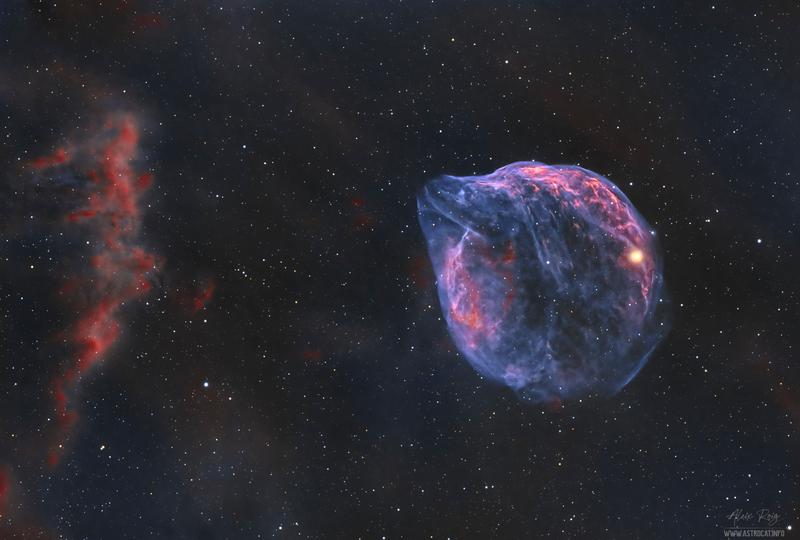NASA's Astronomy Picture of the Day chooses photograph taken from southern Catalonia
Photo of dolphin-shaped star bubble shot from Prades by astrophotographer Aleix Roig

NASA's Astronomy Picture of the Day (APOD) chose a photograph on Wednesday taken from Prades, in the southern area of Catalonia, by astrophotographer Aleix Roig.
Roig shot the 'Sh2-308' a 'dolphin-shaped star bubble' as NASA wrote on its website.
The star that created the bubble, the company goes on, explains that "it was the star in the blue nebula's center, a famously energetic Wolf-Rayet star."
In fact, these stars, in general, "have over 20 times the mass of our Sun and expel fast particle winds that can create iconic-looking nebulas. In this case, the resulting star bubble spans over 60 light-years, is about 70,000 years old, and happens to look like the head of a dolphin."
"Named Sh2-308 and dubbed the Dolphin-Head Nebula, the gas ball lies about 5,000 light years away and covers as much sky as the full moon -- although it is much dimmer. The nearby red-tinged clouds on the left of the featured image may owe their glow and shape to energetic light emitted from the same Wolf-Rayet star," NASA said about the picture.
58 hours over 15 days taking pictures
Photographer Aleix Roig is one of the responsible for the Astronomy park in the Prades mountains.
His picture, featured on NASA's website on Wednesday, was already awarded by the London Royal Observatory Greenwich and chosen by National Geographic as one of the most popular in 2022.
The photo took 58 hours of shots taken over 15 different days.
For astrophotographers, getting an APOD means having "international recognition." Members of the park already say that the "dark skies in Prades have the perfect conditions" to be able to observe space.